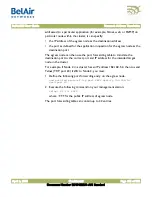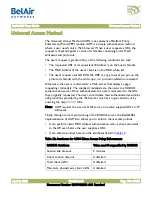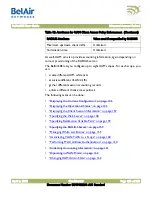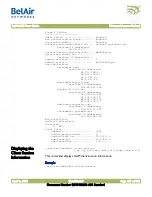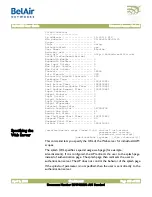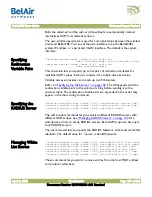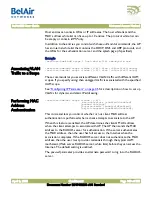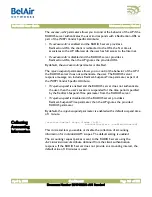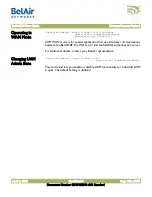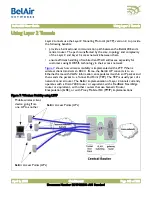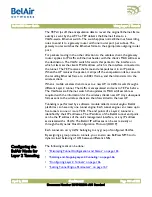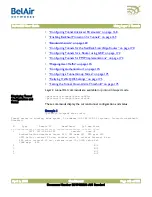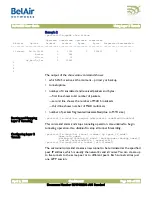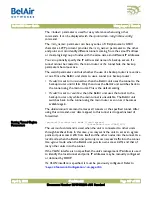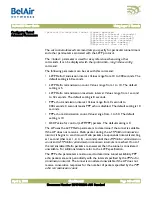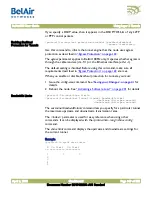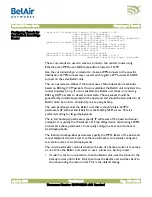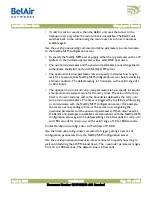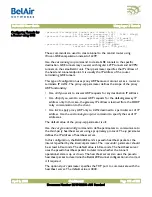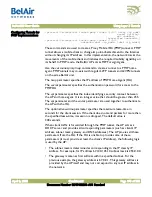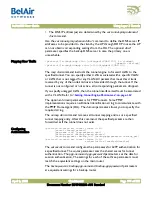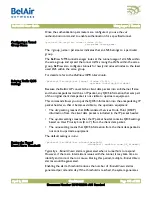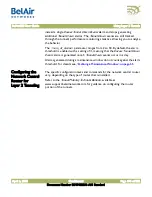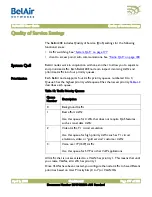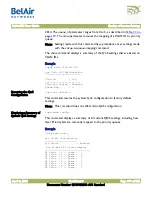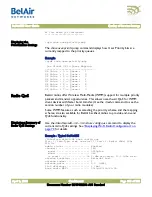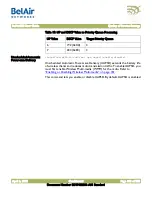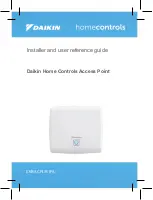
BelAir20E User Guide
Using Layer 2 Tunnels
April 2, 2012
Confidential
Document Number BDTM02201-A01 Standard
The <index> parameter is used for easy reference when using other
commands. It can be displayed with the
/protocol/te-<eng>/show config
command.
The <stn_name> parameter can be any series of 18 alphanumeric ASCII
characters. L2TP protocol provides the <stn_name> parameter to the other
end point so it can identify different tunnels coming from the same IP address
or create logical group of nodes with the same name and different IP addresses.
You can optionally specify the IP address and name of a backup server. If a
tunnel cannot be created to the main router or if a tunnel fails, the backup
parameters become active.
The
switch
parameter controls whether the use of a backup router is revertive
or not. Once the BelAir unit starts to use a tunnel to a backup router:
• If
switch
is set to
non-revertive
, then the BelAir unit uses the tunnel to the
backup router until it fails. Only then does the BelAir unit switches back to
the tunnel using the main router. This is the default setting.
• If
switch
is set to
revertive
, then the BelAir unit uses the tunnel to the
backup router only while the main tunnel is unavailable. The BelAir unit
switches back to the tunnel using the main router as soon as it becomes
available again.
The
delete tunnel
command removes all tunnels or the specified tunnel. After
using this command, user data mapped to this tunnel is dropped instead of
forwarded.
Setting Tunnel Engine
Parameters
/protocol/te-<eng>/set mode {local|egress}
[interface-vlan <VLAN_ID>]
The
set mode
command is used when the unit is connected to other units
through backhaul links. In this case, you may want the unit to act as an egress
point and put access traffic from itself and the other nodes into the tunnel. Use
local
mode when the BelAir unit puts only its own access traffic into the tunnel.
Use
egress
mode when the BelAir unit puts its own access traffic and that of
many other units into the tunnel.
If the VLAN interface is not specified, the unit’s management IP address is used
to identify the local tunnel end point. IP addresses may be manually configured
or obtained by DHCP.
If a VLAN interface is specified, it must be previously configured. Refer to
“Layer 2 Network Configuration” on page 183
.

